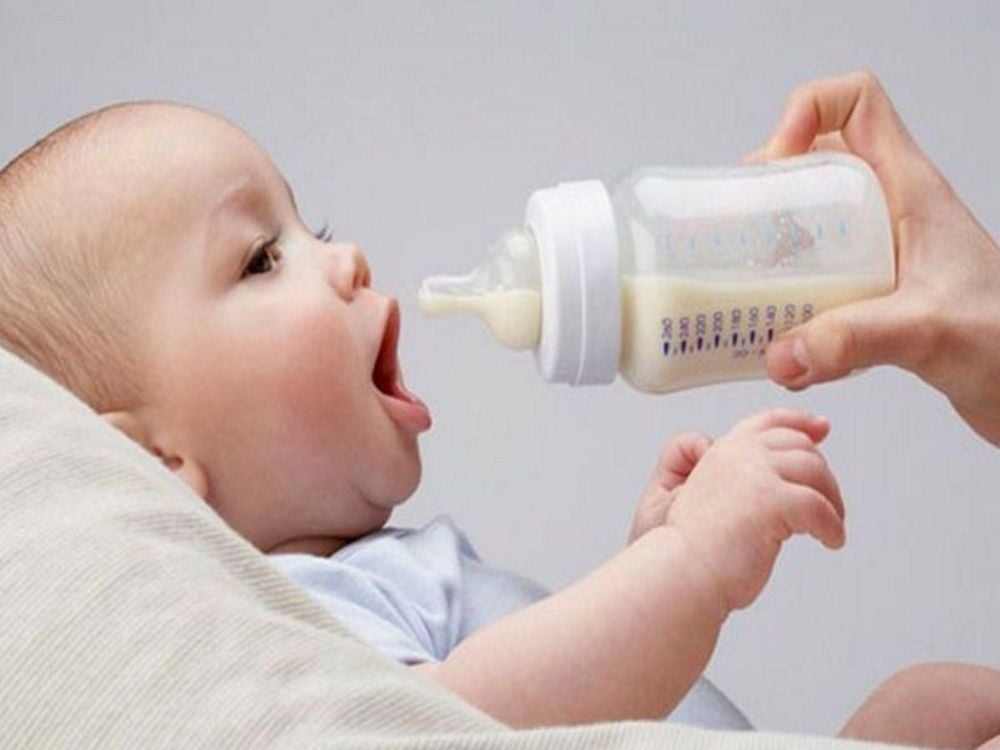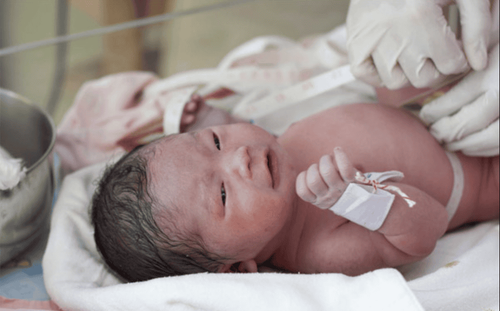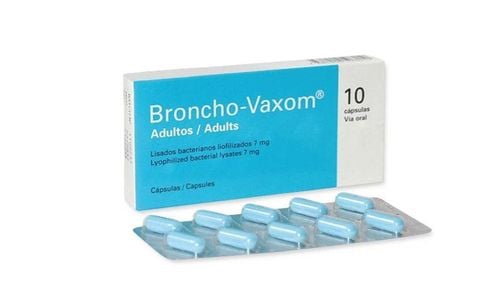This is an automatically translated article.
The article was professionally consulted by Specialist Doctor I Bui Thi Ha - Pediatrician - Neonatologist - Department of Pediatrics - Neonatology - Vinmec Ha Long International General Hospital.There are many possible causes and risk factors for acute respiratory infections in children, ranging from environmental factors and the child's body. Parents need to understand and limit the risk factors that make their children sick and prevent dangerous complications.
1. Causes of acute respiratory infections in children
Causes of acute respiratory infections in children are viral and bacterial infections. In which, 60-70% of acute respiratory infections in children are caused by viruses: influenza virus, respiratory syncytial virus, and adenovirus. Bacteria that cause acute respiratory infections in children are: Listeria, Coli, Gram-negative bacteria, Pneumococcus, Hemophilus Influenza, Klebsiella Pneumococcus, Staphylococci, Streptococcus...
Lung infections in children can occur. born before, during or after parturition, closely related to the time before the water breaks before delivery.
During delivery, postpartum resuscitation and newborn care also need to be aseptic, otherwise the newborn is very susceptible to infection from tools, the environment, and caregivers.
Newborns can get pneumonia from inhaling infected amniotic fluid, meconium or secretions from the mother's genital tract when the baby is about to be born.
Another cause of pneumonia in babies is the lack of oxygen in the womb. Therefore, during pregnancy, the mother must periodically check, especially in the last stage, to detect this condition early and take timely intervention measures.

Nguyên nhân nữa khiến trẻ sơ sinh bị viêm phổi đó thai nhi trong tử cung bị thiếu dưỡng khí
In addition, underweight infants due to incomplete esophageal reflexes and irregular muscle movements are prone to gastroesophageal reflux, causing milk to be mistakenly inhaled into the lungs, causing breathing symptoms. palpitations, shortness of breath, pale eyes. The more milk inhaled, the more severe the symptoms, which can cause pneumonia.
Children with diseases such as dermatitis, inflammation of the oral cavity, inflammation of the umbilical cord can also lead to pneumonia.
2. Risk factors that make children more susceptible to acute respiratory infections
Favorable factors make children susceptible to acute respiratory infections such as:
Children under 1 year old, especially infants. Low birth weight (under 2500g) Children with diseases or birth defects: measles, rickets, malnutrition, congenital heart disease, congenital immunodeficiency... Environmental factors
Cold climate , the weather changes suddenly, the humidity is high. Crowded, polluted, unhygienic environment, cramped housing, damp and dusty, kitchen smoke, cigarette smoke. Someone in the family has tuberculosis and smokes. Children are not fully vaccinated and on schedule. Improper care for children: Children with vitamin A deficiency, anemia, zinc deficiency, not breastfeeding, malnourished... Newborns often have weak resistance, the immune system of children under 5 is often incomplete. Therefore, the risk of contracting viral and infectious diseases is very high. Children need to be protected by being fully vaccinated with the vaccination program for children, especially children under 1 year of age, parents need to actively monitor and take their children to be vaccinated on schedule to protect their health. for baby.

Chăm sóc trẻ không đúng cách: Trẻ thiếu vitamin A, thiếu kẽm, không bú mẹ, suy dinh dưỡng...
3. Why are children susceptible to acute respiratory infections?
There are children who cough a lot in cold weather, every time they go to the doctor, they get acute respiratory infections, sometimes pneumonia, when they have bronchitis, even though their parents may have taken good care of their children, especially when it's cold.
It can be said that acute respiratory infection is a very common disease in young children. The reason is because of the characteristics of the anatomical structure of the nasopharynx of children: the pharynx is the intersection of the eating and breathing tracts.
In the pharynx, there are many developed lymphoid organizations, especially the nasopharynx group (vegetation adenoide called VA). In addition, the younger the child, the narrower the nasal cavity, when infected, the mucus will increase, making the nasal cavity narrower, making it more difficult to breathe through the nose, then causing the child to breathe through the mouth.
Therefore, the air is not filtered and not heated before entering the lungs. This explains why children with nasopharyngitis are at high risk of bronchitis and pneumonia. Symptoms when children have acute respiratory infections are: high or moderate fever, sneezing, coughing, stuffy nose, runny nose, hoarseness...
With children under 1 year old sometimes vomiting a lot, crying, examination Throat mucosa is bright red. If you have a bacterial superinfection, the disease can easily progress to severe bronchitis, pneumonia. In particular, streptococcal superinfection, if not treated correctly, will have a high risk of rheumatic heart complications, long-term, expensive treatment and affect the health of the child.
Acute respiratory infection is the most common disease in children, leading cause of hospitalization and death in children, especially children under 5 years of age. It is estimated that a child under the age of 5 years may experience Acute Respiratory Infections 5-8 times per year.
To limit the risk of acute respiratory infections in children and prevent dangerous complications, parents need to take care and monitor their children carefully, especially children with a history of respiratory infections.

Để hạn chế nguy cơ mắc nhiễm khuẩn hô hấp cấp tính ở trẻ và phòng ngừa biến chứng nguy hiểm, cha mẹ cần chăm sóc, theo dõi trẻ chu đáo
Children who do not eat properly are at risk of micro-mineral deficiency causing anorexia, growth retardation, malabsorption,... If they notice the above signs, parents should supplement their children with products. The supplement contains lysine, essential micro-minerals and vitamins such as zinc, chromium, selenium, and B vitamins to help fully meet the nutritional needs of children. At the same time, these essential vitamins also support digestion, enhance nutrient absorption, help improve anorexia, and help children eat well.
Parents can learn more:
Signs of zinc deficiency in children
Micronutrient deficiency and failure to gain weight in children
Please regularly visit Vinmec.com website and update useful information to take care of your child. Take care of the baby and the whole family.














